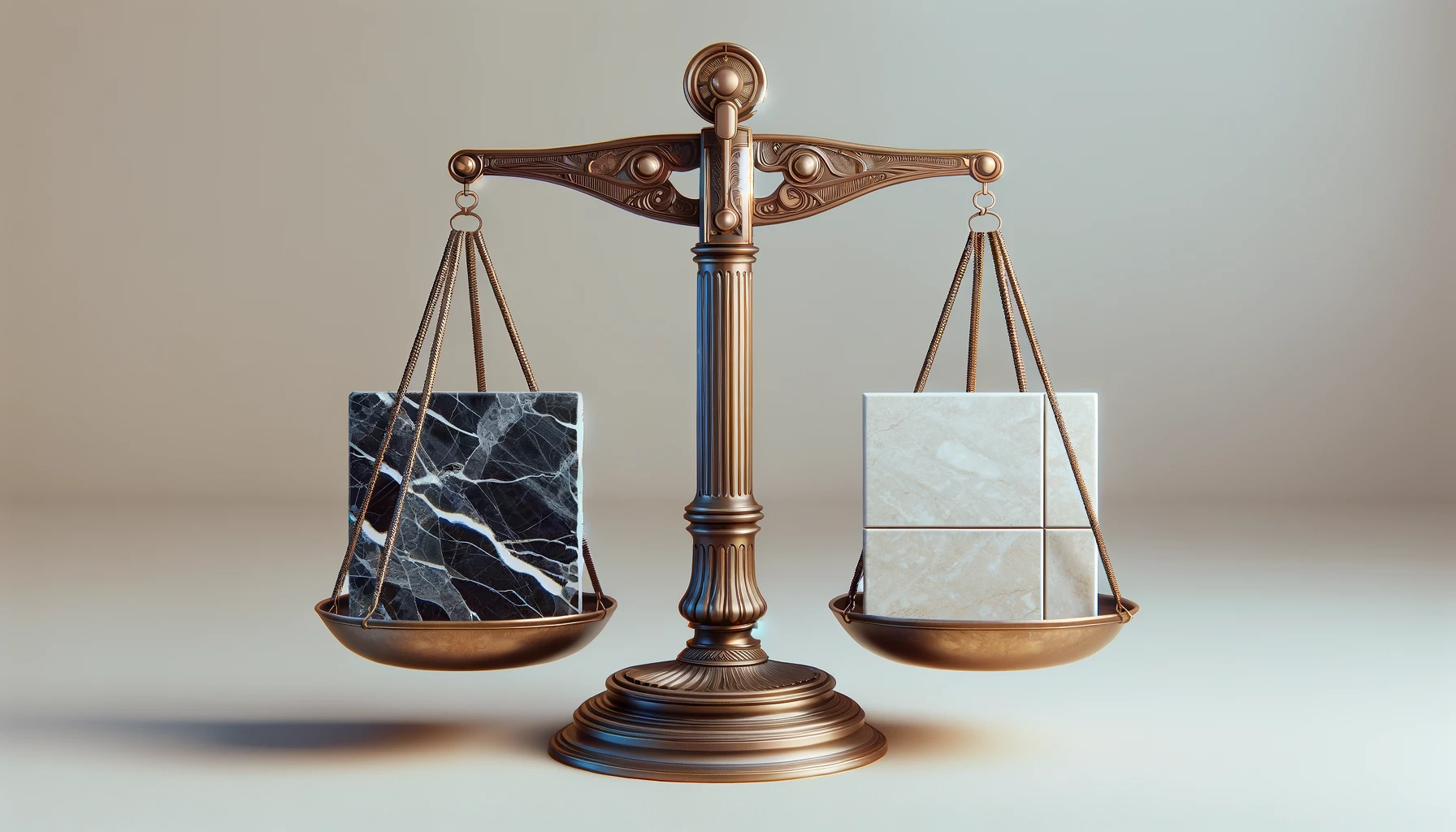The Unmatched Beauty of Nature
Marble captivates with its unparalleled beauty: each slab is a unique masterpiece, displaying veins and color variations that are the result of millions of years of geological evolution. This uniqueness guarantees that no two slabs are the same, making marble the perfect choice for exclusive spaces where customization reaches its highest expression.
But there's more: the charm of authentic marble also lies in its mineral composition, which gives it an unparalleled depth and play of light. These properties produce three-dimensional visual effects, adding life and a complex color palette to a space in ways that imitations struggle to achieve.
Although technology has made significant progress in visually replicating stone, marble-effect porcelain stoneware, produced with digital printing techniques, remains confined within the limits of its artificial nature. Although it might accurately imitate the look, it falls short in avoiding a certain repetitiveness and uniformity, distinct from the natural and intricate color variation found in genuine marble veins. No matter how realistic these imitations may appear, they cannot capture the depth and elegance that nature alone bestows upon authentic marble.
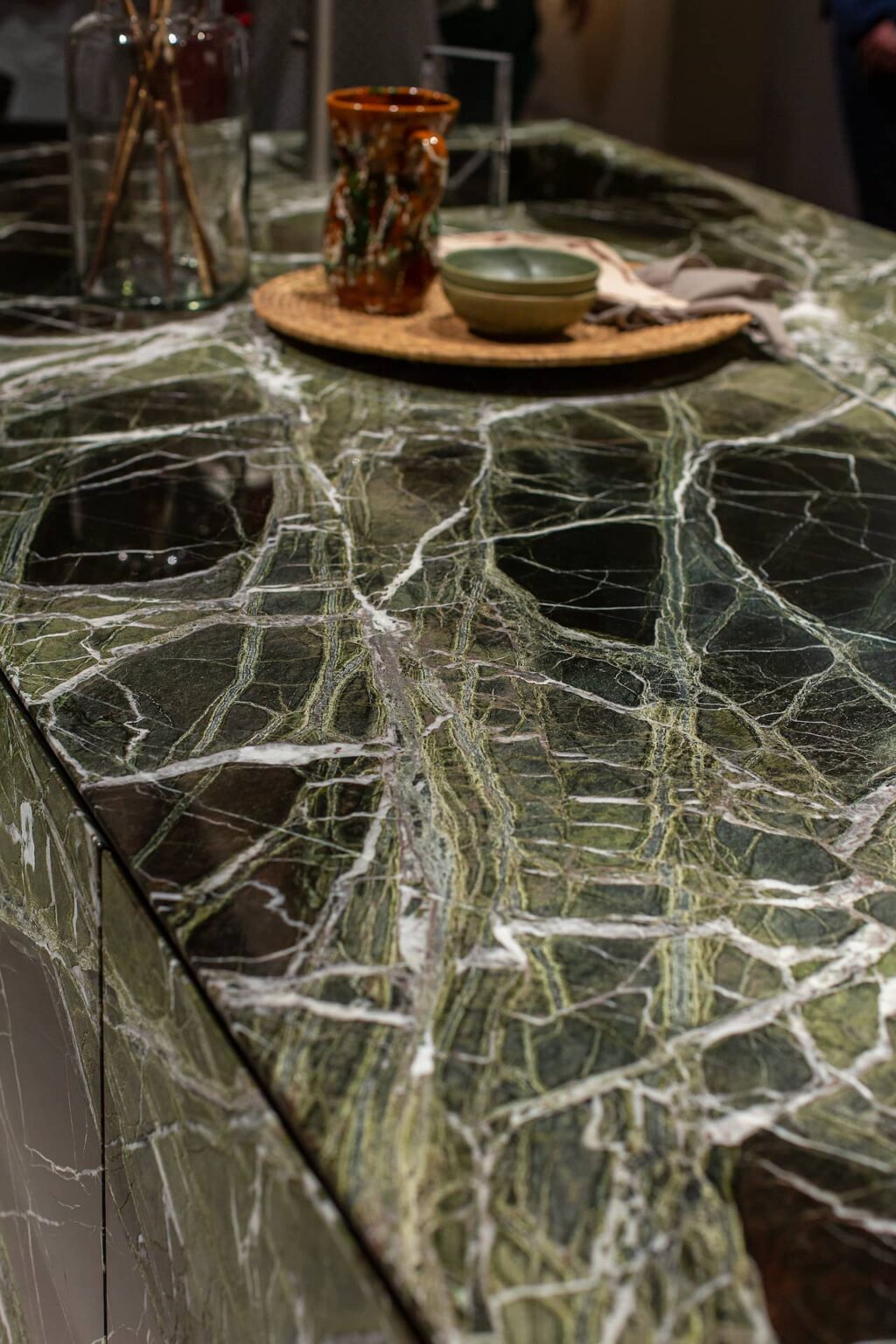
A Touch Unlike Any Other
Not only does marble surpass its imitations in terms of visual appeal, but it also stands out to the touch: its surface, cool and smooth, offers an unmistakable tactile sensation.
Porcelain tiles may attempt to mimic the visual appearance of marble, but they fall short of replicating that cool, smooth sensation of the real stone.
These tactile qualities, subtle yet essential, are an integral part of the sensory pleasure provided by marble, where physical contact becomes a tangible luxury experience.
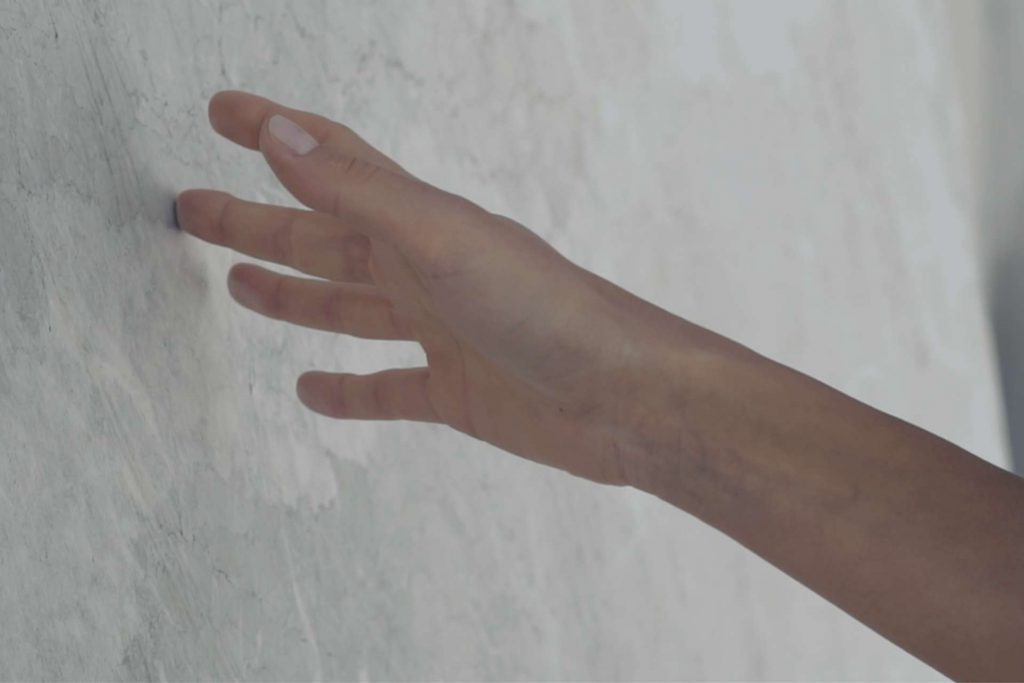
Seamless Elegance
In the realm of luxury design, the use of large marble slabs minimizes the number of visible seams, creating an uninterrupted surface. This visual and aesthetic continuity enhances the natural beauty of marble and contributes to a sophisticated look. Fewer seams also make cleaning and maintenance easier, with less accumulation of dirt and bacteria.
Porcelain tiles, on the other hand, require seams, minimized through modern installation techniques but still required to comply with regulations. This technical requirement affects the overall appearance, compromising the visual continuity characteristic of expansive marble surfaces. Even if minimal, this break can impact the visual harmony of spaces, particularly large ones, where the goal is to recreate the visual homogeneity offered by natural marble.
A distinctive advantage of marble over porcelain lies in the ability to polish the surfaces on site, achieving an even more uniform and continuous effect. This technique further refines the appearance of the slabs, eliminating the perception of seams and highlighting the natural grandeur of marble. This approach not only enhances aesthetics but also simplifies cleaning and maintenance further, crucial aspects in prestigious environments where every detail is meticulously attended to.
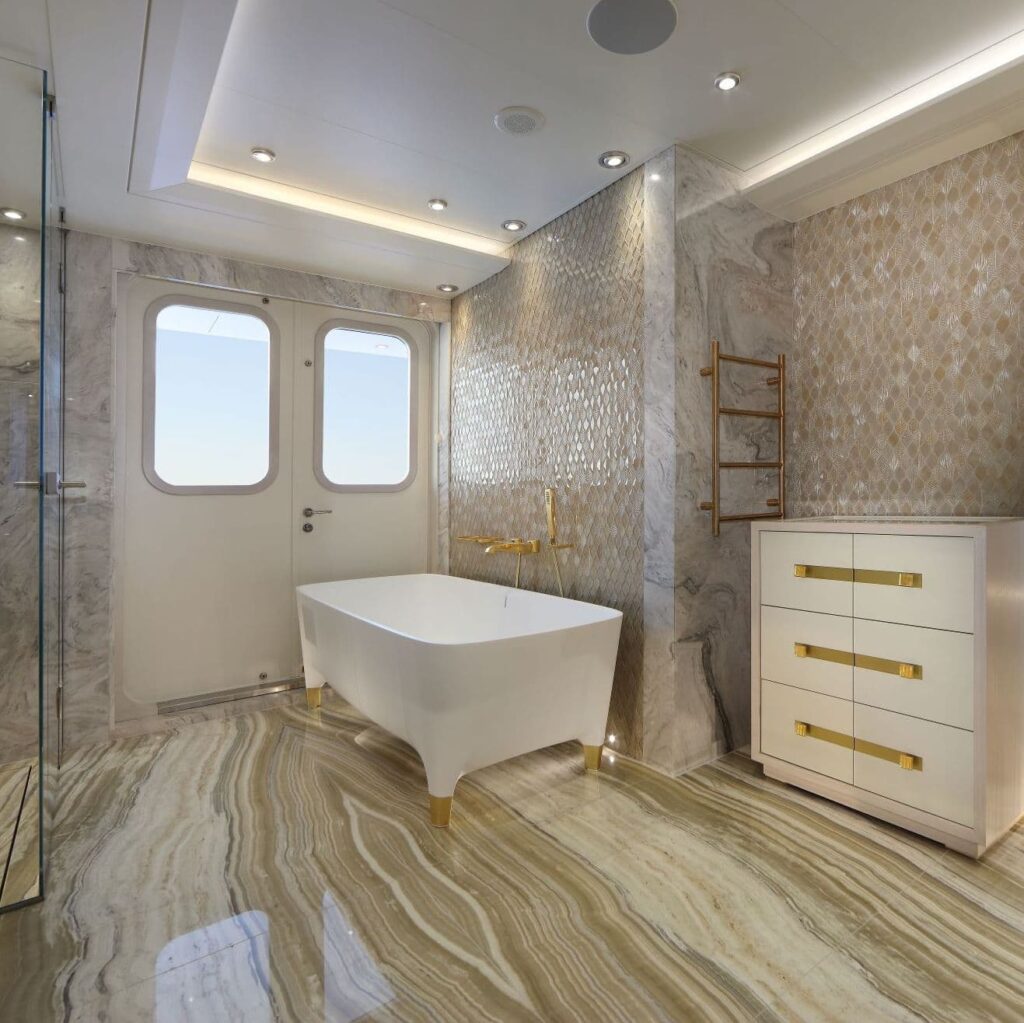
A Future-Proof Investment
Marble stands out for its extraordinary durability and longevity. Though it requires periodic maintenance, this natural material maintains its original splendor for centuries. Its resilience over time is evidenced by architectural works and sculptures that continue to captivate humanity after millennia, demonstrating that, with proper care, marble can transcend eras while preserving its beauty intact.
In contrast, porcelain stoneware, valued for its durability and relative ease of maintenance, tends to show wear signs more readily, especially regarding patterns and surface finishes that can fade or scratch, thus compromising the desired aesthetic effect over time. This risk of degradation, absent in natural marble when properly maintained, highlights a significant difference in the appearance durability between the two materials.
A Valuable Choice
The use of authentic marble in renovation or construction projects is not just an aesthetic choice but represents a strategic investment that effectively increases the value of properties and yachts. This material, a symbol of prestige and luxury, not only visually enriches a project but also increases its value in the eyes of discerning buyers and users. The quality of materials is often seen as a direct indicator of overall value, and in this context, marble stands out as an unparalleled choice.
At the same time, opting for marble means connecting to a rich tradition of excellence in architecture and design. Used through the centuries as a symbol of beauty, power, and permanence, marble carries with it a historical and cultural wealth that enriches every space. This deep connection to the history of art and architecture imbues environments with a sense of continuity with the past, adding layers of meaning and value that extend beyond the purely physical aspect.
While porcelain stoneware may offer practical benefits and an appealing aesthetic, it cannot compete with the perceived value and cultural depth of natural marble. Though its imitations might deceive the eye, they do not deceive the market: in the high-end real estate sector, savvy buyers and investors undoubtedly prefer the authenticity and longevity guaranteed by marble, considering them essential qualities for a long-term investment.
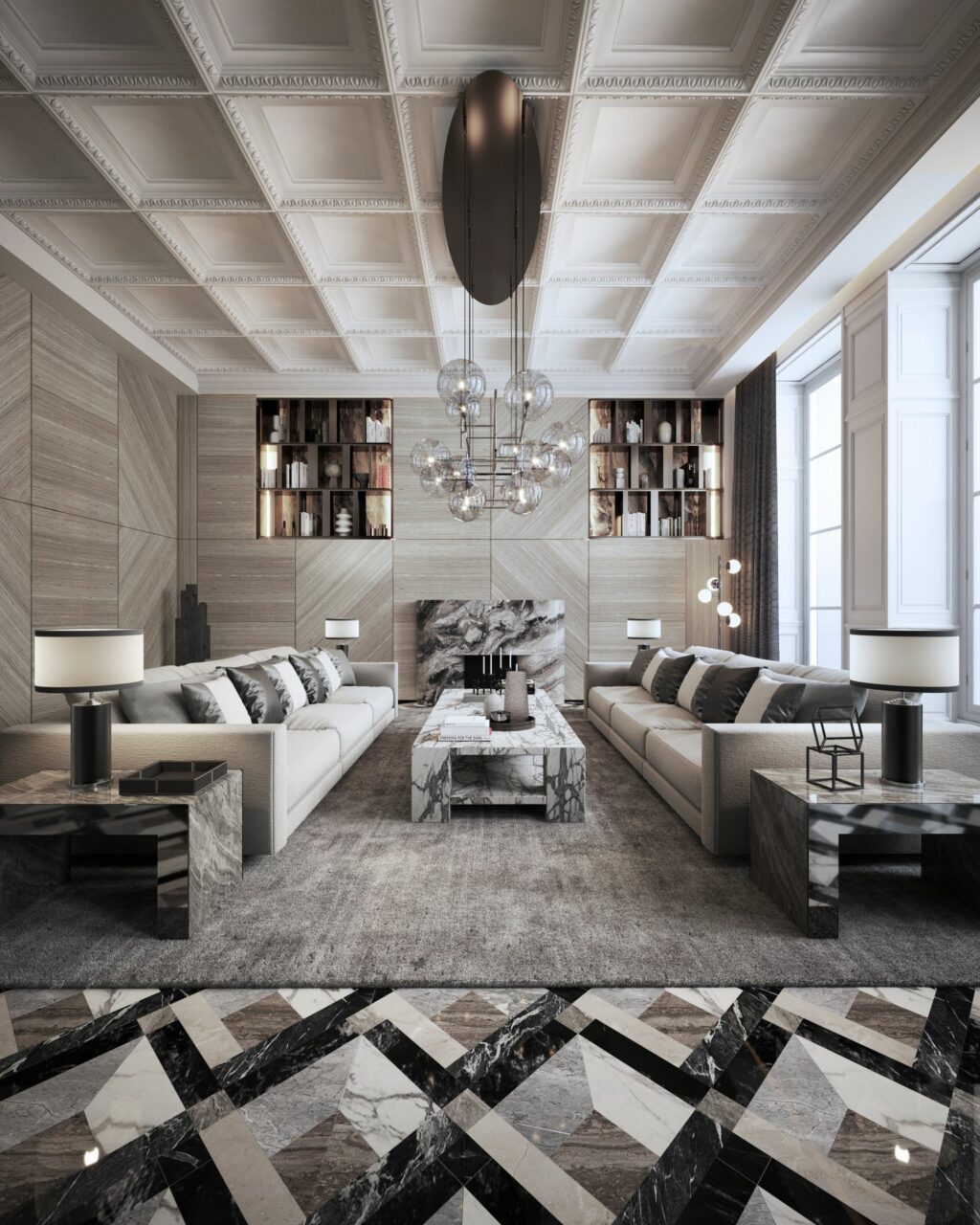
Limitless Versatility
Marble is also distinguished by its versatility, making it a star in the worlds of design and architecture. Its ability to be worked into a wide range of finishes – from mirror-polished to matte, from natural to elaborately crafted – allows it to easily adapt to any style or aesthetic requirement. Moreover, marble can be custom cut, enabling the creation of unique pieces like staircases, intricate floor designs, and other decorative elements that transform spaces into true masterpieces.
Comparatively, while porcelain stoneware offers practical benefits for a wide range of uses and can be tailored to fit, it's constrained by its thickness and the maximum sizes available for production, as well as the inherent qualities of its surface finishes. Unlike marble, where textures and visual impacts can be shaped and refined post-production, porcelain's look and feel are locked in during manufacturing, leaving no room for later customization.
This lack of flexibility curtails creative expression, complicating efforts to achieve the unique exclusivity and adaptability that marble projects can boast. These limitations affect not just the design and application versatility of porcelain but also its capacity to meet a project's specific needs in a nimble way, thereby diminishing the possibilities for customization that are often critical in premium environments.
Natural Marble: A Sustainable Choice
Marble, as a natural material, can be seen as a more sustainable option if its extraction and processing are responsibly managed. This approach can lessen the environmental impact associated with its life cycle, making marble an eco-friendly choice.
Moreover, marble is durable and fully recyclable, meaning that it can reduce the need for frequent replacements, further diminishing resource consumption and waste accumulation.
In contrast, producing porcelain stoneware may require high energy consumption and the use of non-renewable resources, making its lifecycle less sustainable. Additionally, porcelain stoneware's lifespan might be shorter than marble's, necessitating more frequent replacements and thereby increasing the long-term environmental impact.
For the disposal of porcelain stoneware in specific contexts, such as marine applications, certification verifying its compliance with environmental standards for disposal is required. On the other hand, marble does not need such certifications due to its natural composition, which eases recycling and reintegration into the environment. This feature, coupled with its durability and the possibility of being reused or recycled at the end of its life, confirms marble as an ecologically responsible choice.
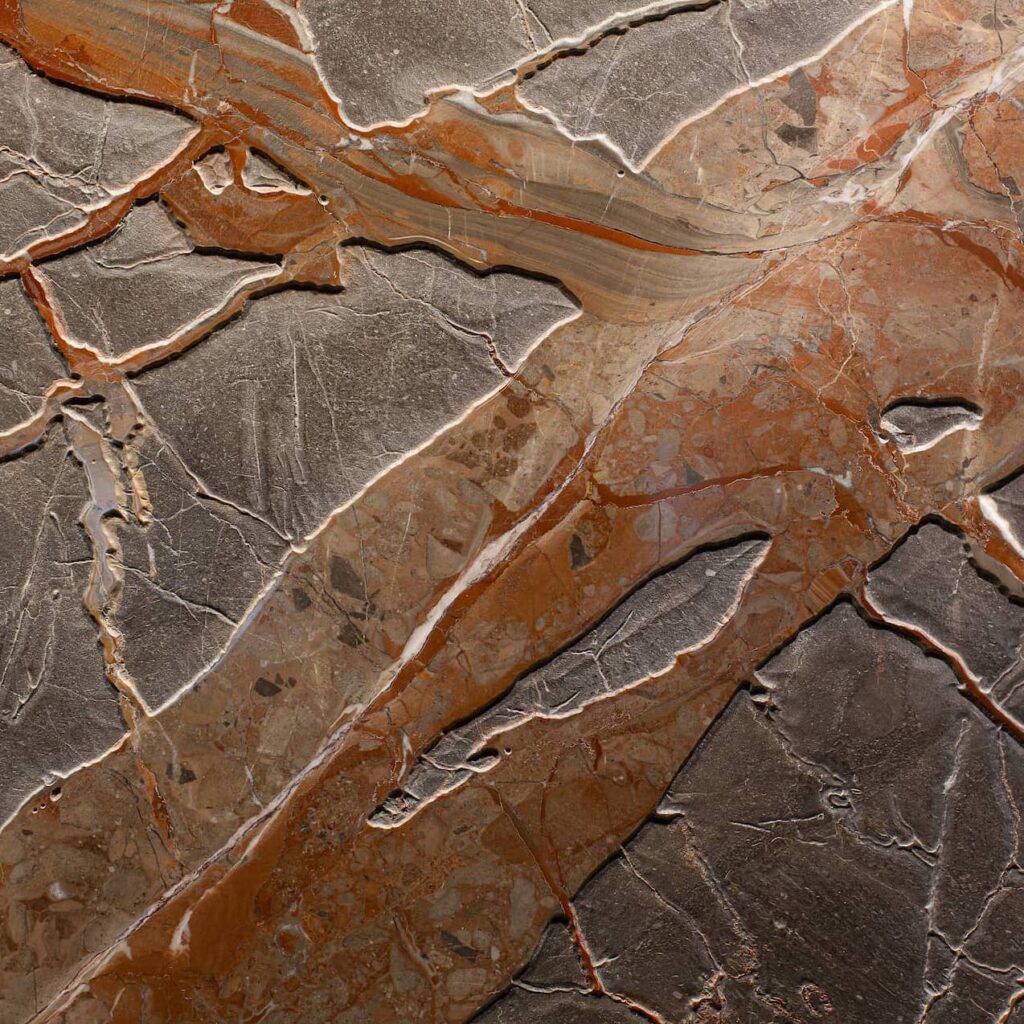
Beyond the Surface, into the Third Dimension
Marble, available in both slabs and blocks, offers almost limitless possibilities for creating three-dimensional applications.
This versatility enables the creation of not only flat surfaces like floors and wall claddings but also 3D structural and decorative elements such as columns, staircases, statues, fireplaces, and much more. Its capability to be sculpted into detailed and complex shapes, combined with the use of book-matched veining that allows for continuous and naturally coherent vein patterns, makes marble extremely adaptable. For this reason, it is suitable for high-level custom projects where three-dimensionality and the uniqueness of forms can be explored in ways that other materials hardly allow.
On the other hand, although porcelain stoneware can be cut to fit various applications, it is generally used for flat surfaces such as floors and walls. Its technical characteristics and durability make it a preferred choice in high-traffic areas or environments exposed to high stress, but it may be less suitable for projects requiring unique shapes and designs.
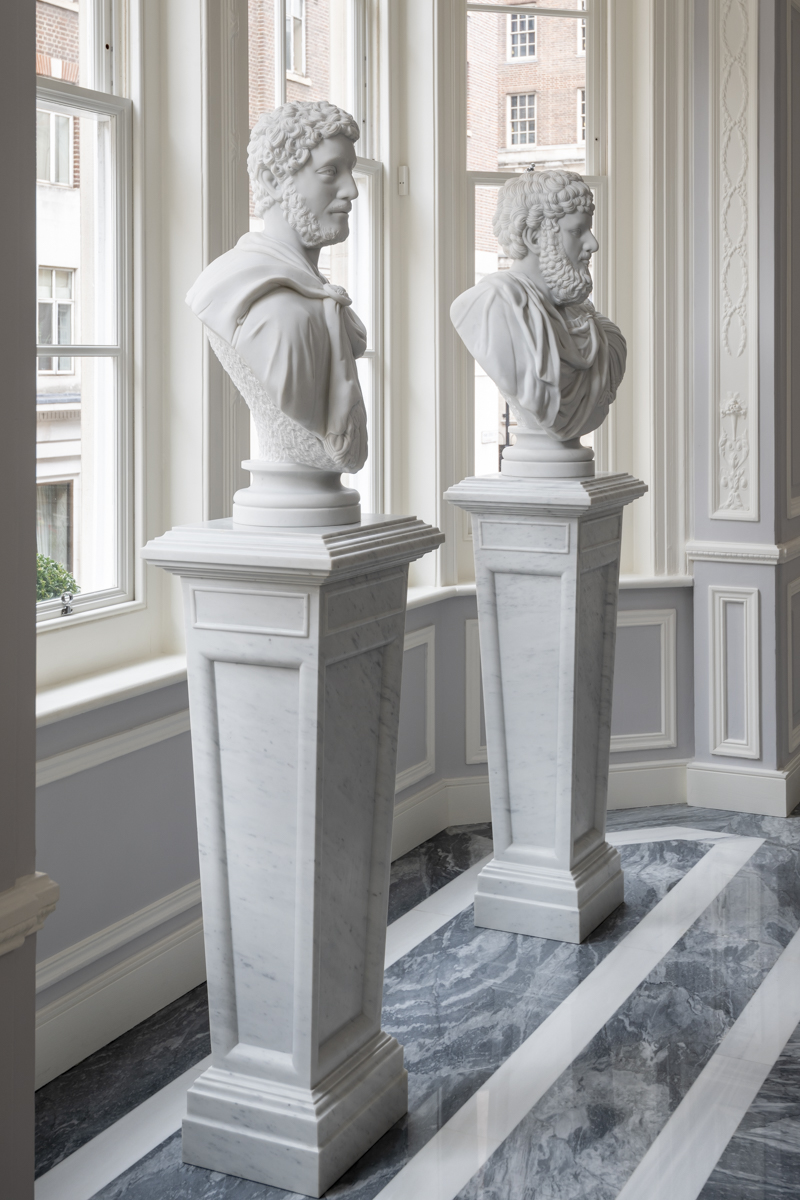
If you're a designer who pays attention to detail, a yacht owner who settles for nothing less than perfection, or a contractor in search of that distinctive touch that makes people say "wow", come explore with us the wonderful world of materials. Between the timeless elegance of marble and the innovative functionality of porcelain stoneware, the choice matters: deciding between marble and porcelain isn't just about which is better, but which best meets the specific needs of your project.
Curious? Then don't stop here.
Let's grab a coffee together, whether through a screen or in person, and let our experience guide you to the perfect solution for your project.
